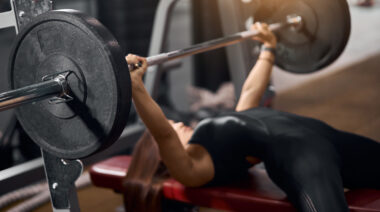Mobility, the combination of flexibility and stability, is an absolutely essential quality for better performance. Greater mobility prevents injuries and unlocks speed, power, and agility. It allows greater leverage, gives you more options, and makes you more resilient.
The pursuit of mobility often reveals startling internal and external limitations. For those of us who lack mobility, performance training can be a painful, jerky process that often leads to injuries. However, just because you’re stiff as an oak tree does not mean you must forfeit strength.
If you’re an athlete, weakness from immobility isn’t even an option. You still need to train and get stronger. The good news is, there are plenty of ways we can keep getting stronger in congruence with a mobility practice. While the goal will be to graduate to higher-skill training, lets continue getting stronger every day.
Everybody Should Squat, But What If You Can’t?
The best athletic development exercises and programs rely on the use of advanced mobility, strength, and coordination. We should all invest heavily in gaining mobility and becoming proficient in those rewarding athletic, skill-based exercises, like the overhead squat and L-sit to handstand. However, some of us just aren’t there yet.
Some of us may have anatomical barriers to the conventional deadlift, deep back squat, or many other exercises. If you can’t do these movements safely and correctly, you shouldn’t. Strength coaches must respect individual differences and current mobility restrictions. Particularly in the midst of our very sedentary culture, it’s important to regress movements and personalize programs for individual needs.
It’s a dangerous assumption that anybody and everybody can jump right into power cleans and back squats on their first day of training. It creates a great likelihood of injury, while reinforcing poor movement patterns that limit athleticism.
Work With What Your Body Gives You
So what do you do if you’re as flexible as a fence post? Whether you’re a teenager who’s played too many video games, or a 30-something athlete suffering repetitive injuries, we must train all the fundamental movement patterns as best we can, so as not to create muscle imbalances and weak links.
I’m not here to address mobility itself, but rather give you some ideas of how to train if certain movements are outside of your current mobility envelope. This is a simple plan that quickly addresses the strength and power equation, without causing injuries. Even more, it leaves time to address the elephant in the room: your inability to tie your shoes without using a prop. Without further ado, here is the resistance training plan for the hyper-immobile.
I’ve broken the program down into a power category and five other fundamental human movement patterns.
- Do the power exercises with full recovery, using the time between sets to perform appropriate mobility drills.
- Do 3-5 sets of one exercise in each movement category, three days a week.
I recommend super-setting your knee-dominant movements with pulls, and your hip-dominant movements with pushes. Rep ranges will depend on goals and experience. The focus here is on exploring what exercises tend to allow strength and power gains without requiring mobility you don’t yet have.
Power:
- Isodynamic split squat jump
- Med ball overhead toss
- Med ball quarter squat jump to vertical toss
Knee Dominant:
- Heavy sled pushes (20 yds or less)
- Dumbbell split squats
- Goblet squats – double kb’s if needed, block heels if necessary
Hip Dominant:
- Towel slide hamstring curls
- TRX hip extension
- GHD hamstring curls – Start slow and don’t go all the way down at first, because you probably won’t make it back up
- Sumo stance deadlift
Press:
- Kettlebell half-kneeling vertical press
- Push ups – Regress until form and rep speed is perfect; progress to your needed level of difficulty
- Dumbbell floor press
Pulls:
- Dumbbell batwing rows (lay prone on a bench that is just slightly inclined)
- Inverted row
- Pull ups – Use assistance and shortened range of motion as needed
Pillar:
- Farmer’s walks
- Suitcase carries
- Push up position plank
- RKC plank
- Side planks
- Crawls
- Bridges
If you are able, a great addition to every program is the Turkish get up. Practicing get ups is a fun process that can add variety to your training. It has tremendous carryover to nearly every lift, and can stand in for your Press or Pillar categories if you are looking to simplify. Best of all, it will create better mobility and improve overall movement.
As always, pay close attention to the quality of the movements. If you have to strain or jerk to get into a position, you are probably not aligned correctly and compensating to get there. There is probably a better exercise for you, and you should find it.
This program is not to be done in the place of a mobility practice, but in congruence. In the long run, correcting your mobility issues is key to long-term success and breakthroughs. However, don’t ever let a little pain or movement limitation be the barrier that keeps you from training. You might need to be patient and get creative, but physical training is too important a practice to give up.






